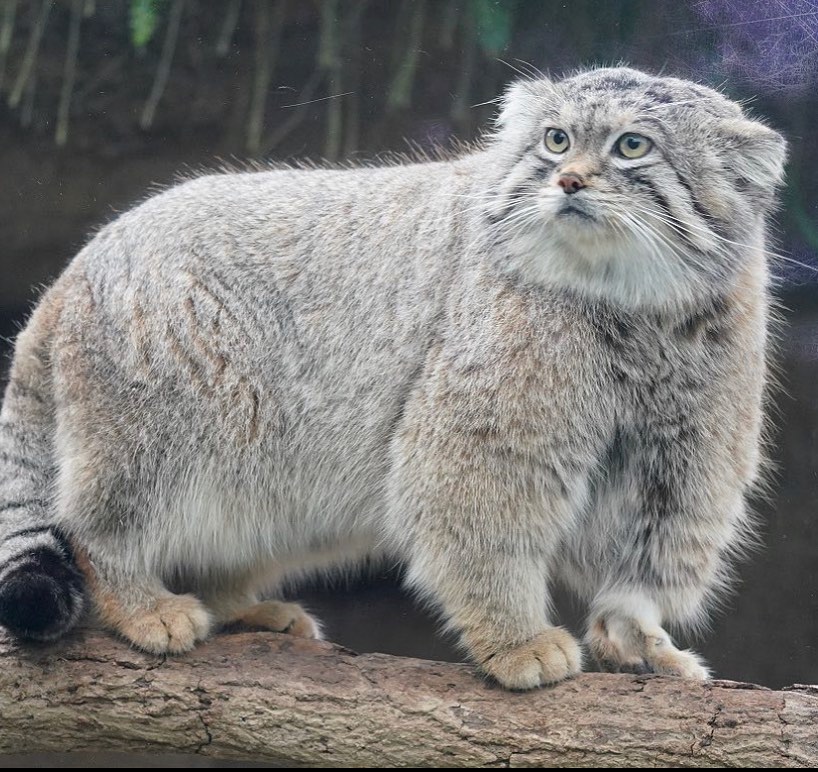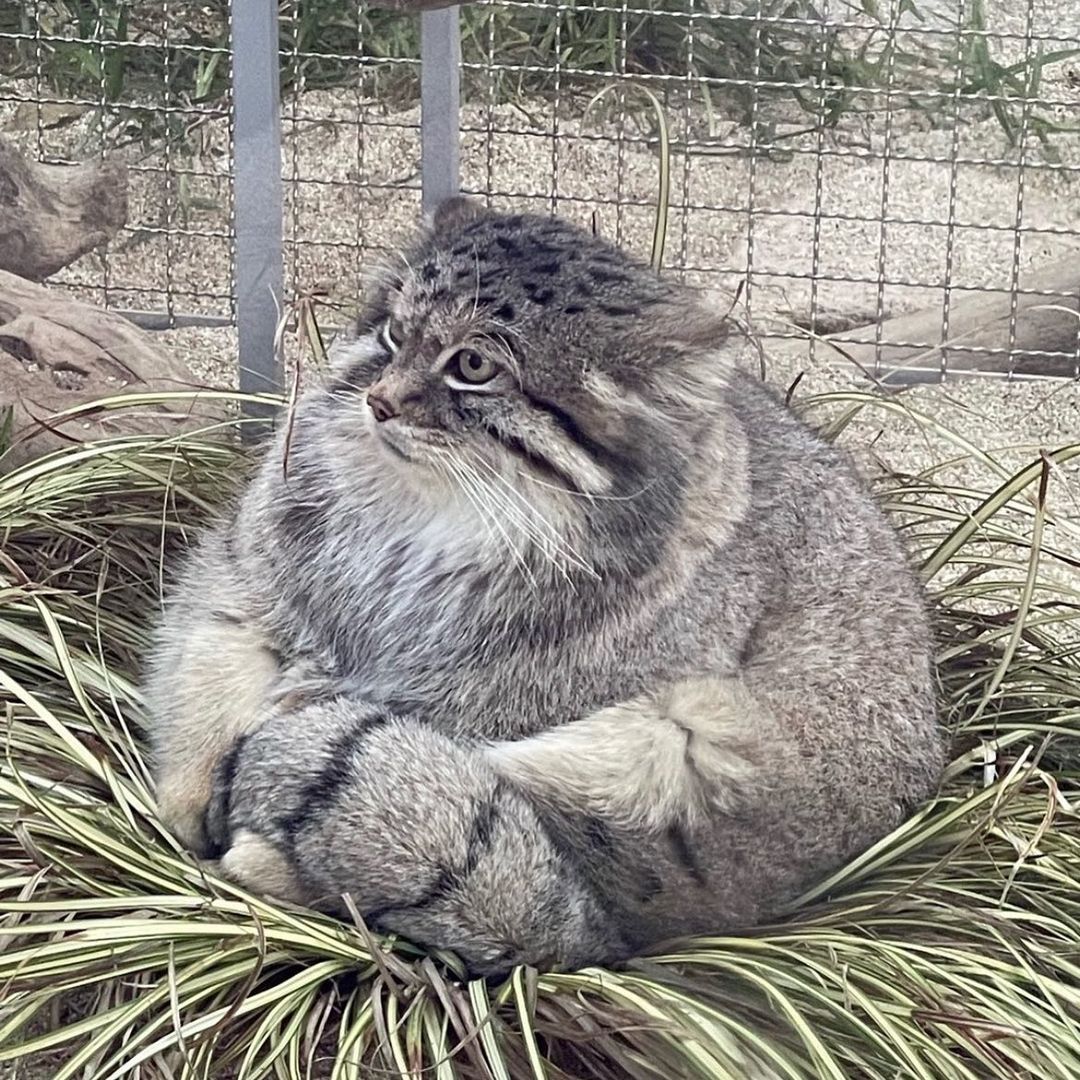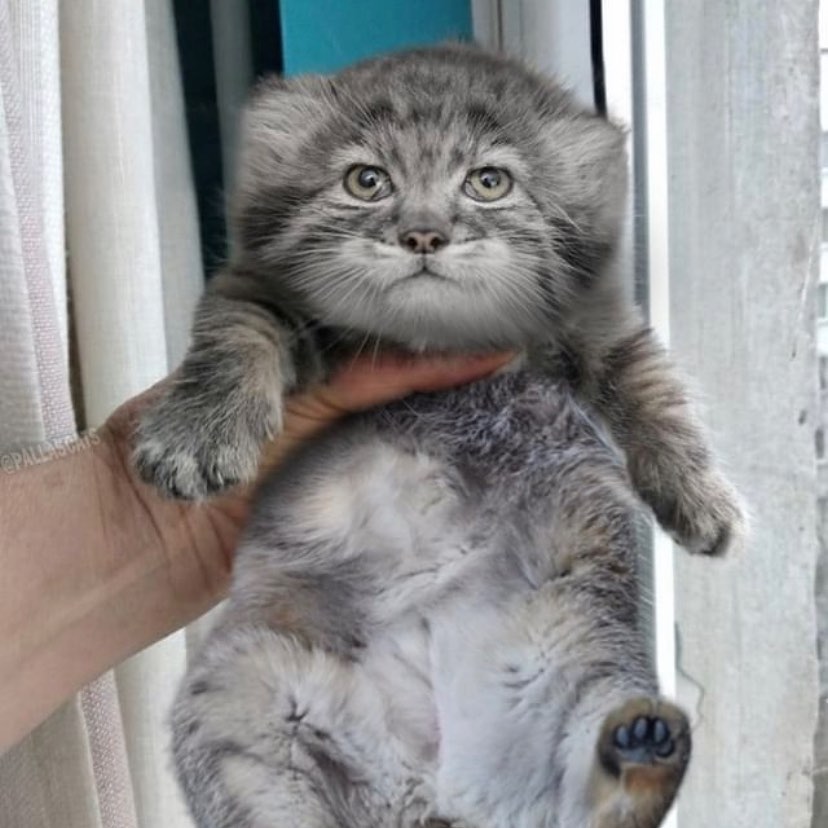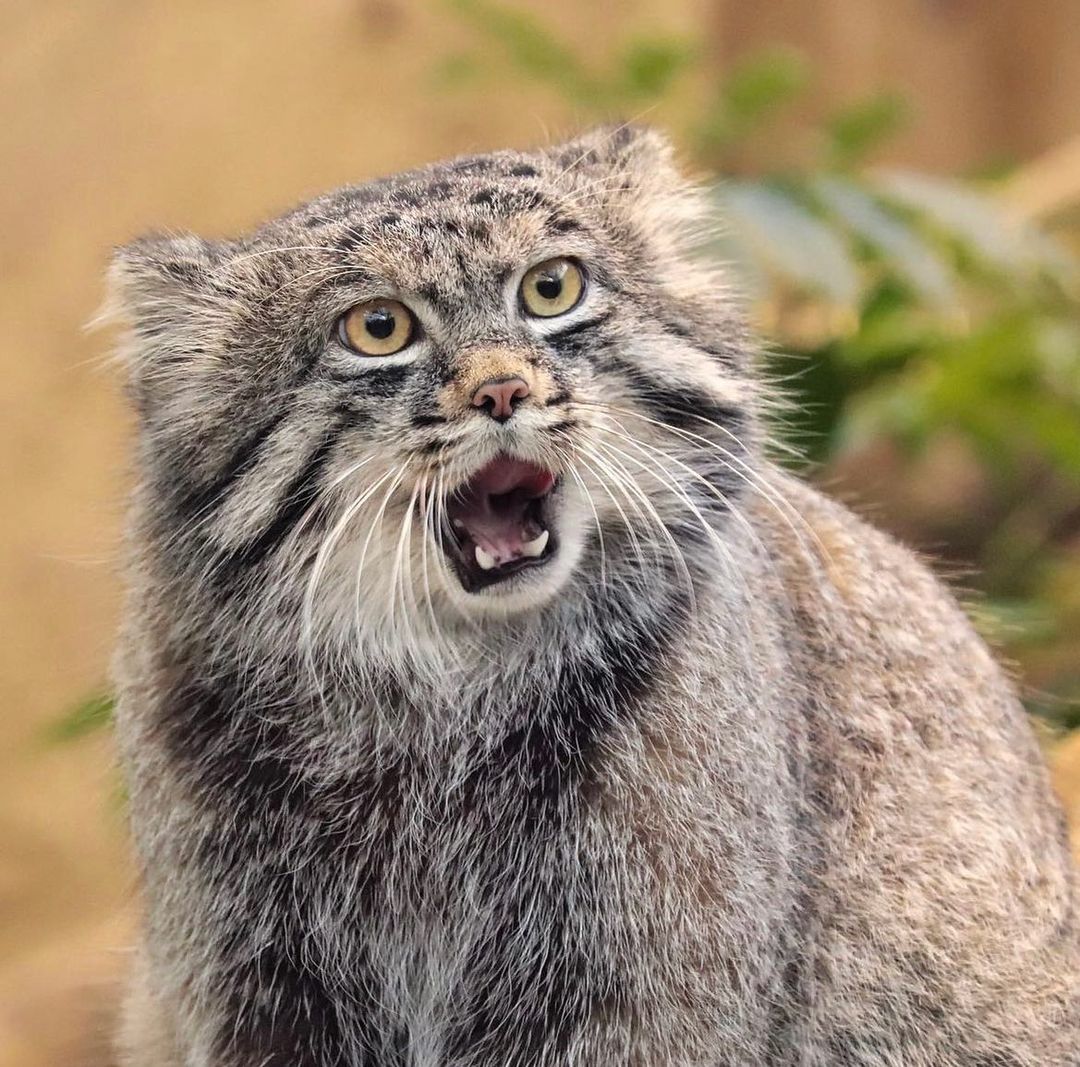Scientifically known as Otocolobus Manul, the Pallas's cat is a small wild cat that lives in rocky, dry, scrubby areas throughout Central Asia. Naturally secretive, Pallas' cats are seldom seen in the wild by humans and are perfectly adapted to the harsh conditions typical of their habitat. A Pallas' cat made international headlines in January 2023 after it was spotted living on Mount Everest, in the Sagarmatha National Park in Nepal. Pallas' cats are found in Afghanistan, Bhutan, China, India, Iran, Kazakhstan, Kyrgyzstan, Mongolia, Nepal, Pakistan, Russia, and Turkmenistan.
Baby Dasha
This small and adorable wildcat is known for its flattened and rounded face, stocky build, and super fluffiness. The Pallas' cat is listed as 'Least Concern' on the IUCN Red List, meaning it is not critically endangered. Below are adorable photos and some information about the Pallas' cat.
Pallas's Cat's Appearance
Photo: @cats.pallas/InstagramPallas's cats are about the size of house cats but appear much bigger and heavier thanks to their stocky builds and long, dense coats. They have the longest and densest fur of any cat, which helps protect them in their frosty habitat. However, in reality, Pallas' cats weigh only around ten pounds and measure up to twenty-six inches in body length. They have an 8-12 inch tail. Further, Pallas' cats stand 30-35 cm tall. They have relatively short legs that are well-suited to ambushes and short stalks than running.
The Pallas's cat's shaggy coat is especially thick on its belly, this helps keep the feline warm while stalking prey on snow or frozen ground. Depending on the season, their fur changes color, in winter being gray and more uniform in color, in summer a gray/fox-red.
Pallas' Cat's Lifestyle
As loners, Pallas’s cats are territorial and move slowly but purposefully. They conceal themselves within their environment, spending their days in caves, crevices, and burrows abandoned by other animals. Both female and male Pallas’ cats scent mark their territory. They are adept at stalking and ambushing prey, using short vegetation and rocky terrain for cover.
Sometimes, Pallas’s cats hide by the entrances of burrows to pounce as soon as the animal exits. They feed mainly on Pikas, a small mountain-dwelling mammal found in Asia and North America, as well as other small rodents. Furthermore, Pallas’s cats are poor runners due to their compact bodies. They often seek refuge on boulders or in small crevasses when pursued by predators, including snow leopards, wolves and eagles.
Pallas' cats have a very short mating season, with females being in estrus for only twenty-six to forty-two hours, a shorter period than most cats. According to Wired, February and March are Pallas' cats' mating seasons. In April and May, Female Pallas' cats give birth to a litter of two to six kittens. Pallas' cat kittens start going hunting with their mother by four months old. By six months old, the kittens reach adult size and are ready to breed at the age of 10 to 11 months.
These Grumpy-Faced cats may be small, but they are aggressive and can cause harm to humans just like larger cats. People are easily deceived by the cuteness and fluffiness of these top-quality predators with sharp claws and teeth. However, no matter how fluffy they look, Pallas' cats are not the same in character as domestic cats. The usual lifespan of Pallas' cats is 8 to 9 years old, according to Smithsonian's National Zoo.
Where can you see a Pallas's cat in The United States?
You can see a Pallas’ cat named Pazi at Potter Park Zoo in Lansing, Michigan. There are currently three Pallas’ cats you can see at Red River Zoo in Fargo, North Dakota. Pallas’ cats can also be seen at Columbus Zoo and Aquarium in Delaware County, Ohio, and Prospect Park Zoo in New York City.
Other zoos in America that have Pallas' cats include Cincinnati Zoo & Botanical Garden in Ohio and Birmingham Zoo in Alabama.
Pallas's Cats as Pets
Can you have a Pallas cat as your personal pet? The answer is capital NO. Pallas' cats are extremely cute to behold, but they should not be kept as pets because for one, they are wild animals and it will be difficult for them to survive at low altitudes. Even though Pallas's cats are legal to keep as pets in your state or county, finding one to keep as a pet will be a difficult task, as there are only a few of them left. Nevertheless, Pallas's Cats have been kept as pets by a few people around the world. In 2018, a Siberian female scientist had to play the role of a baby Pallas's cat's mother after its biological mother abandoned her. The cute baby Pallas' cat was named Dasha. Cute Dasha loved it when the scientist massaged her stomach after each meal. According to the UK Mirror, the Siberian woman would keep a hand on the kitten’s back to help her fall asleep.
Baby Dasha













